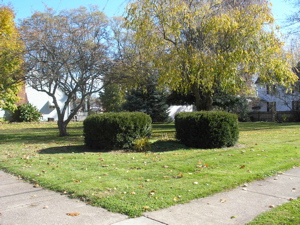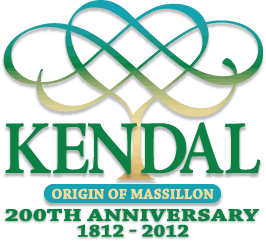Kendal, Ohio facts for kids
Kendal was a small town in Stark County, Ohio. It was officially started on April 20, 1812. A man named Thomas Rotch (1767–1823) founded the town. He named it after a town called Kendal in England. Later, in 1853, Kendal became part of the nearby town of Massillon, Ohio.
History of Kendal
In 1811, Thomas and Charity Rotch moved to Ohio from Hartford, Connecticut. They brought over 400 merino sheep with them. Thomas wanted to build a town focused on making things. His main goal was to create a woolen factory. They settled in western Stark County, near the Tuscarawas River.
On April 20, 1812, Thomas Rotch officially planned out the town of Kendal. He named it after a town in England's Lake District. This English town was important to the Quaker religion and was known for its textile industry. The new town of Kendal had 102 lots and two green spaces.
In April 1813, Kendal got its own post office. Thomas Rotch became the first postmaster. By 1815, Rotch added 45 more lots to the town. Between 1813 and 1823, Kendal grew a lot. It had a sawmill, a woolen factory, a pottery, and a general store. There was also a brickyard, a tannery, a grist mill, and a blacksmith shop. A Quaker Meeting House was built for the town's Quaker residents.
Early Residents
Among the Quaker families in Kendal were Captain Mayhew Folger and his relatives. Captain Folger's sister, Anna, and her husband, Thomas Coffin, also planned to move there. Anna and Thomas Coffin were the parents of Lucretia Coffin Mott, who later became a famous women's rights activist.
Thomas Coffin visited Kendal in 1812. He and Mayhew Folger made a deal to plant 50 acres of wheat. Thomas Coffin then returned home to Philadelphia. Sadly, he passed away in 1815 before he could move to Kendal.
The Kendal Community
Thomas Rotch died in 1823, and his wife Charity passed away less than a year later. In 1826, their property was sold to a group called the Friendly Association for Mutual Interest. This group was part of a movement started by Robert Owen. They wanted to create a community where everyone shared resources and worked together.
The group, also known as the Kendal Community, bought a lot of land and buildings. This included a woolen factory, a sawmill, and several houses. They took out a large loan for the property. However, the group faced many challenges, including debt and disagreements. Because of these problems, the Kendal Community broke up in 1829. Their property in Kendal was then sold off.
Becoming Part of Massillon
In 1826, plans for the Ohio and Erie Canal encouraged new development. The town of Massillon was founded right next to Kendal. Massillon was built along the planned canal route and the Tuscarawas River.
Massillon quickly grew bigger than Kendal. In 1829, Kendal's post office was moved to Massillon. Finally, in 1853, Kendal officially became part of Massillon.



